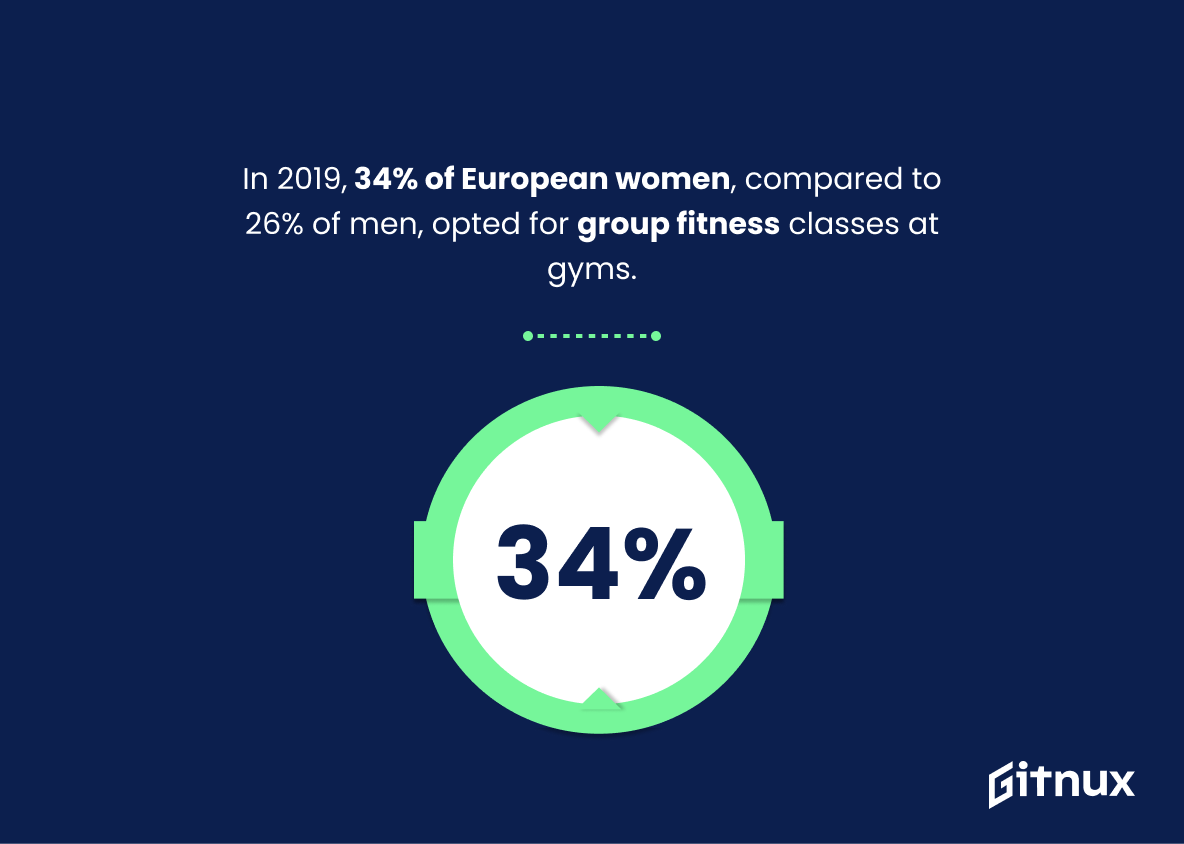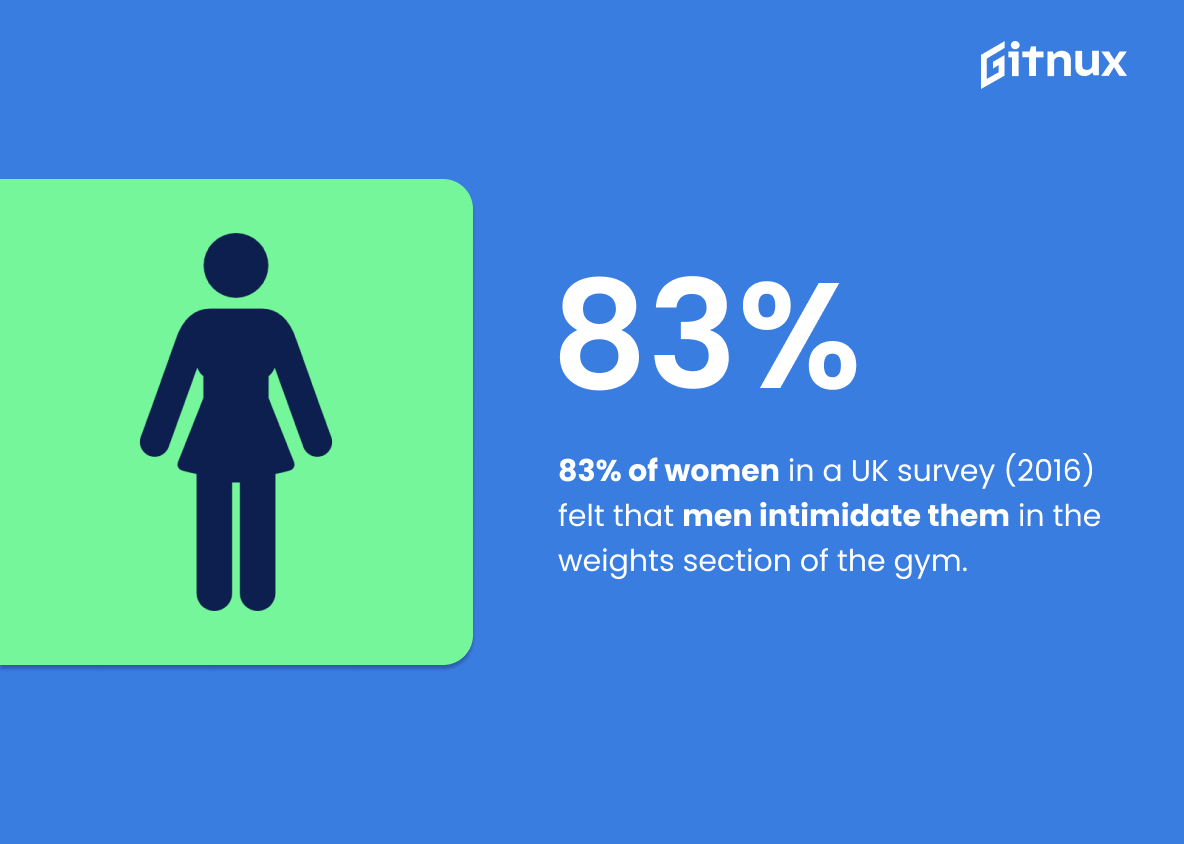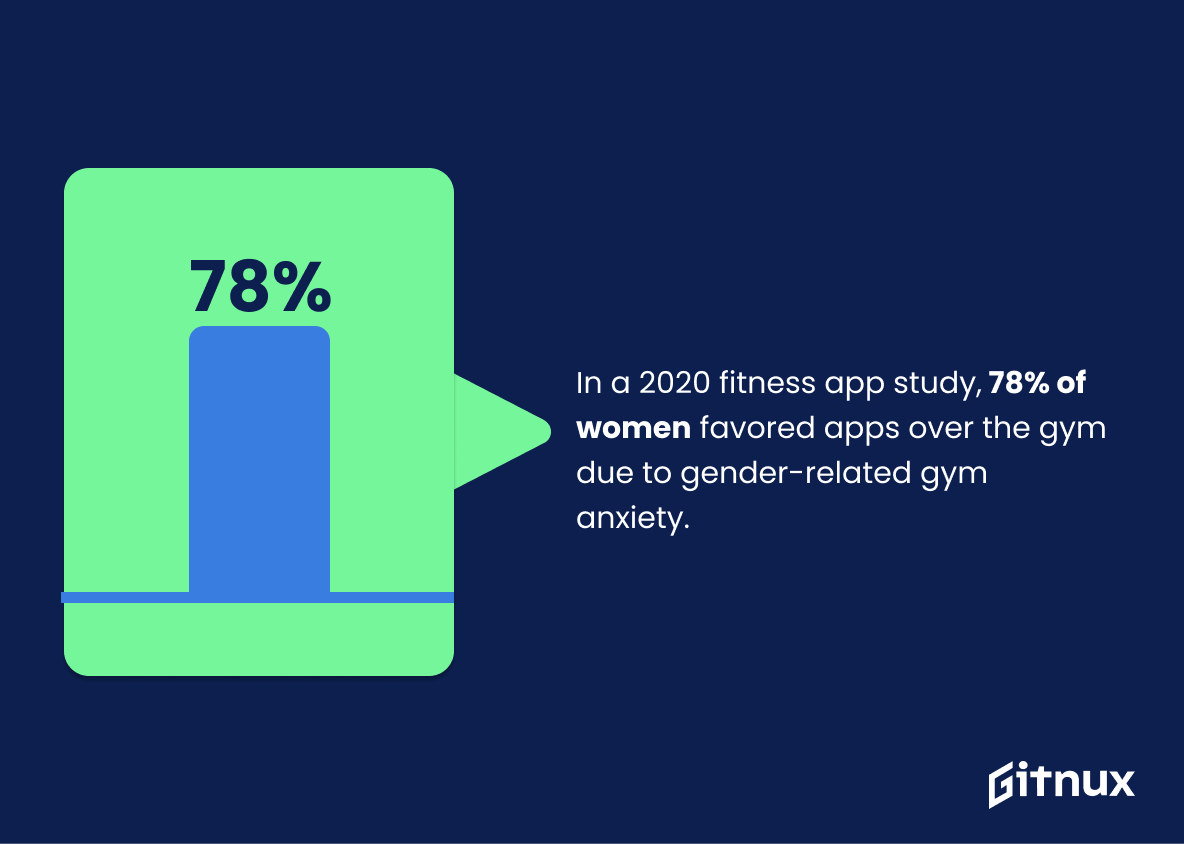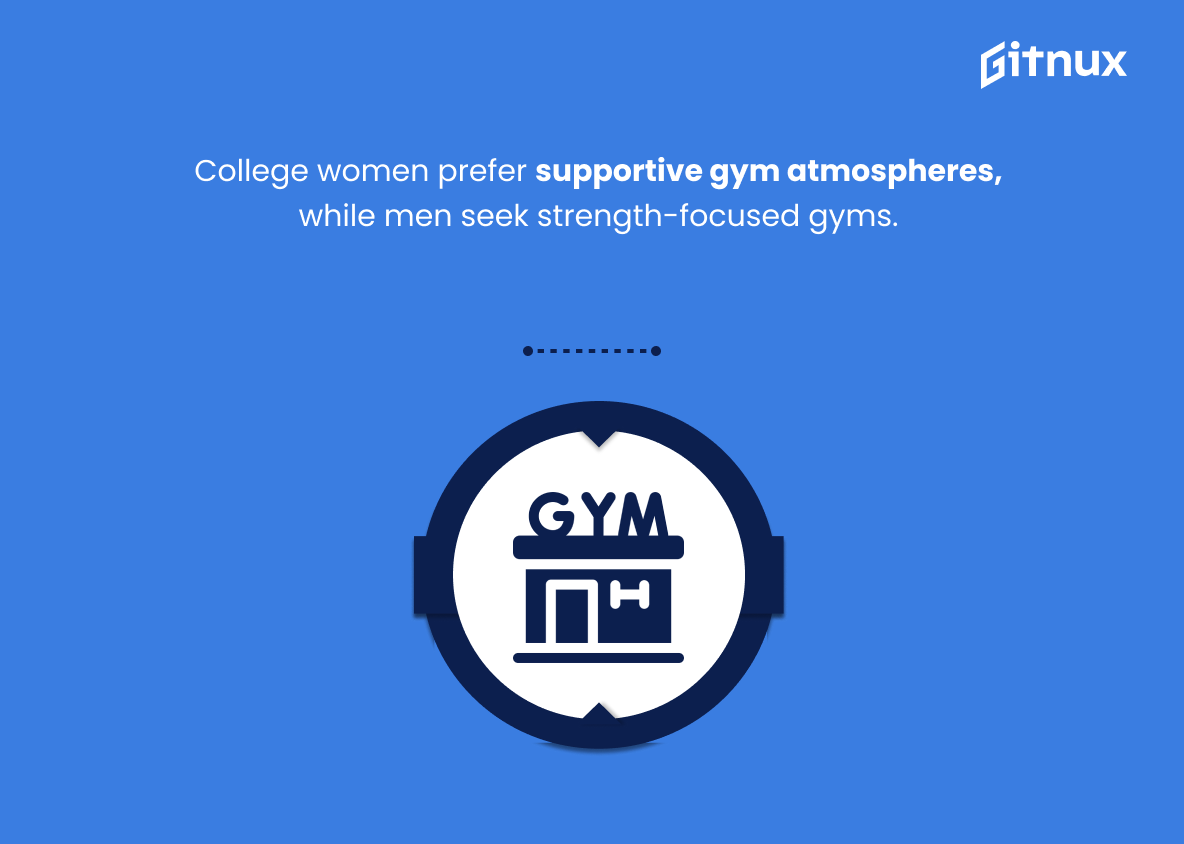Gym and health club activities have become increasingly popular in recent years, with both men and women participating. However, statistics show that there are still gender disparities when it comes to gym participation. This blog post will explore the various gender-based differences in gym attendance across different countries, as well as how these trends may be impacting people’s attitudes towards fitness.
We’ll look at data from the US, UK, Germany, Australia and other parts of the world to get a better understanding of this issue. Additionally we’ll discuss some of the reasons why certain genders might feel more or less comfortable exercising in gyms than others – such as body image issues or intimidation by members of another gender – and what can be done to create an inclusive environment for everyone who wants to stay fit.
This statistic is a telling indication of the gender gap in gym/health club activities in the US. It reveals that a significantly higher proportion of males than females are engaging in such activities, suggesting that there may be a need to address the issue of gender disparity in this area. This statistic is an important piece of information to consider when discussing gym gender statistics, as it provides insight into the current state of affairs.
Women are 45% less likely to participate in strength training activities than men.
This statistic is a stark reminder of the gender disparities that exist in the gym environment. It highlights the fact that women are not given the same opportunities as men to engage in strength training activities, which can have a significant impact on their overall health and wellbeing. This statistic is a call to action for gyms to create an environment that is more inclusive and welcoming to all genders.
Gym Gender Statistics Overview
In a World Health Organization study, 56% of females and 63% of males participated in the recommended weekly amount of physical activity.
This statistic is significant in the context of Gym Gender Statistics because it reveals a disparity between the genders in terms of physical activity. While both genders are engaging in the recommended amount of physical activity, the percentage of males participating is higher than that of females. This could indicate that there are certain barriers preventing females from engaging in physical activity, or that males are more likely to prioritize physical activity than females.
In Germany, 44% of gym members in 2020 were women, compared to 56% men.
This statistic is a telling indication of the gender gap in gym memberships in Germany. It highlights the fact that, despite the strides made in gender equality, there is still a disparity between the number of men and women who are members of gyms. This statistic is an important reminder that there is still work to be done in order to ensure that both genders have equal access to fitness facilities.
In Australia, 54.3% of females participated in gym/strength training activities, while men participated at a rate of 45.7%.
This statistic is a telling indication of the gender gap in gym/strength training activities in Australia. It reveals that women are more likely to engage in such activities than men, suggesting that there may be a need to further encourage male participation in this area.
US college students (2017): 59.9% of female and 64.2% of male respondents reported exercising at a gym at least once per week.
This statistic is a telling indication of the gender gap in gym attendance. It shows that, while both genders are engaging in regular exercise, male students are more likely to be frequenting the gym than their female counterparts. This disparity is an important factor to consider when discussing gym gender statistics, as it provides insight into the different attitudes and behaviors of men and women when it comes to physical activity.
In 2019, 34% of European women, compared to 26% of men, opted for group fitness classes at gyms.
This statistic is a telling indication of the gender gap in gym attendance. It suggests that women are more likely to take part in group fitness classes than men, which could be due to a variety of factors such as comfort level, social pressure, or even the type of classes offered. This statistic is important to consider when discussing gym gender statistics, as it provides insight into the preferences of gym-goers and can help inform decisions about how to better serve both genders.
83% of women in a UK survey (2016) felt that men intimidate them in the weights section of the gym.
This statistic is a powerful indicator of the gender divide in the gym environment. It speaks to the fact that many women feel intimidated by the presence of men in the weights section, which can be a barrier to their participation in this area of the gym. This statistic is an important reminder that there is still a need to create a more inclusive and welcoming atmosphere in the gym for all genders.
In a survey of fitness industry clients, 31% of females reported never having used free weights in a gym, compared to 17% of males.
This statistic is a telling indication of the gender gap in the fitness industry. It suggests that females are less likely to use free weights in a gym than males, which could be due to a lack of confidence or knowledge about how to use them. This could be an important factor to consider when discussing gym gender statistics, as it could be indicative of a larger issue of gender inequality in the fitness industry.
According to a 2016 survey, 60% of women aged 18-24 feel gym anxiety due to judgments related to gender roles in a fitness environment.
This statistic is a powerful reminder of the impact of gender roles in a fitness environment. It highlights the fact that many young women feel intimidated and anxious when it comes to working out in a gym, due to the judgments they may face from others. This statistic is an important one to consider when discussing gym gender statistics, as it demonstrates the need for a more inclusive and supportive environment for all genders.
In a 2020 study of fitness apps, 78% of surveyed women preferred using fitness apps to going to the gym, citing gender-based gym anxiety.
This statistic is a powerful indicator of the prevalence of gender-based gym anxiety among women. It speaks to the need for more gender-inclusive gyms and fitness spaces, as well as the importance of providing women with alternative options for staying fit and healthy. It is an important piece of data to consider when discussing the gender dynamics of the fitness industry.
In a study on college students’ gym preferences, women seek more supportive and friendly environments focused on overall enjoyment, while men search for gym spaces that emphasize strength and bodybuilding.
This statistic is significant in the context of a blog post about Gym Gender Statistics because it highlights the distinct preferences that men and women have when it comes to choosing a gym. It demonstrates that men and women have different motivations for going to the gym, and that these motivations should be taken into account when designing gym spaces. Furthermore, it suggests that gyms should strive to create an environment that caters to both genders in order to maximize their appeal.
Conclusion
The statistics presented in this blog post demonstrate a clear gender disparity when it comes to gym and health club activities. While men are more likely than women to participate in strength training, solo workouts, and bodybuilding-focused gyms, women prefer fitness classes such as yoga or Pilates and boutique gyms that cater specifically to female clients. Additionally, many women feel intimidated by the weights section of the gym due to judgments related to gender roles or pressure from society for them to have slim bodies. These findings suggest that there is still much work needed be done in order create an inclusive environment where all genders can comfortably exercise without fear of judgment or intimidation.
References
0. – https://www.clearinghouseforsport.gov.au
1. – https://www.bhf.org.uk
2. – https://www.apps.who.int
3. – https://www.girlguiding.org.uk
4. – https://www.sportengland.org
5. – https://www.euromonitor.com
6. – https://www..deloitte.com
7. – https://www.link.springer.com
8. – https://www.tandfonline.com
9. – https://www.myprotein.com
10. – https://www.statista.com










